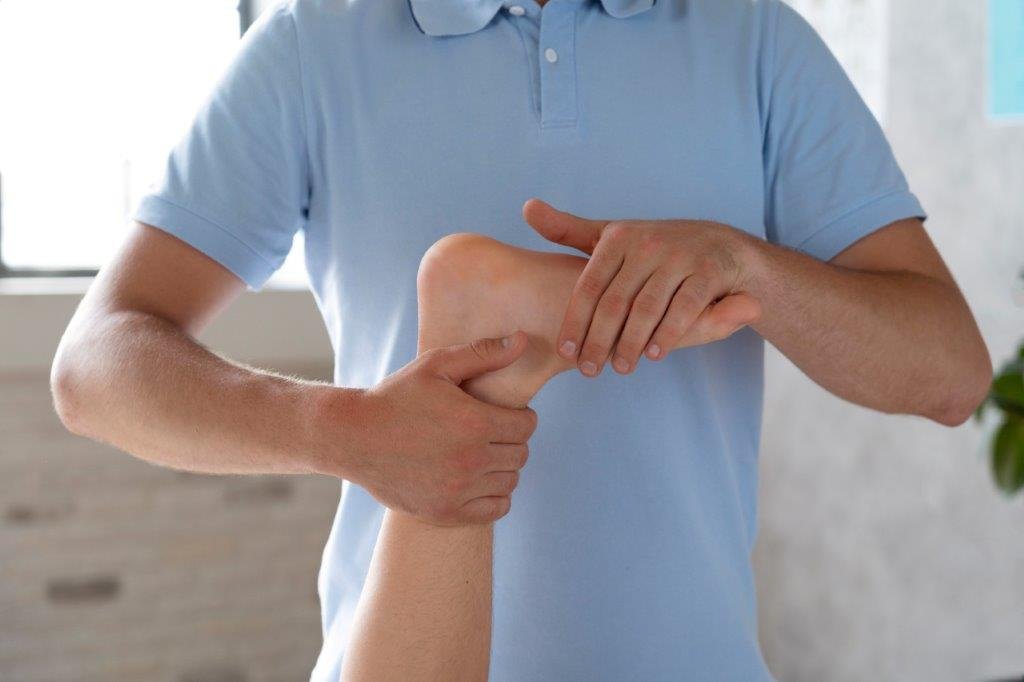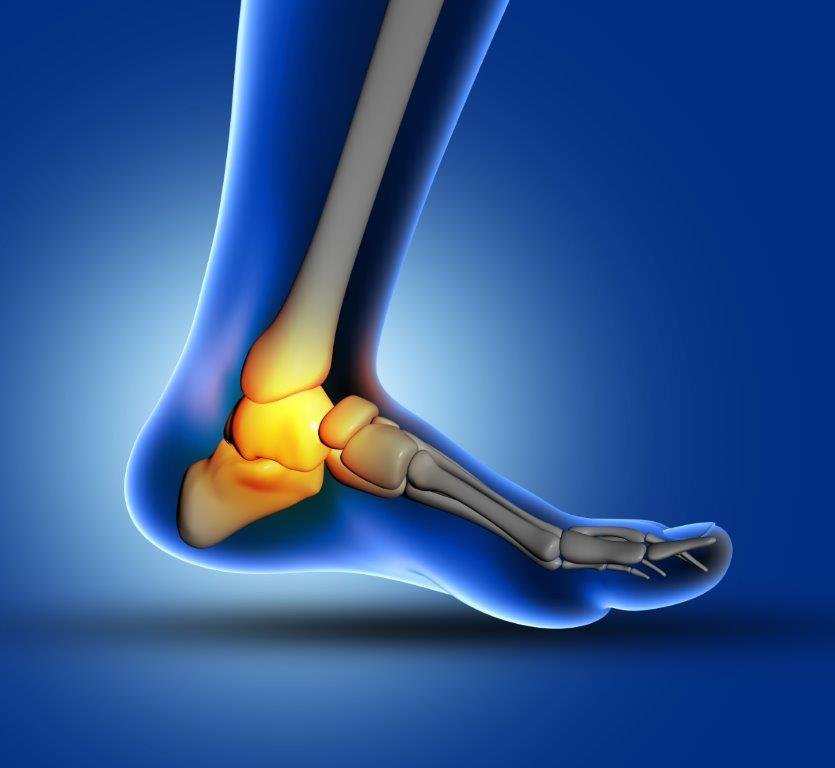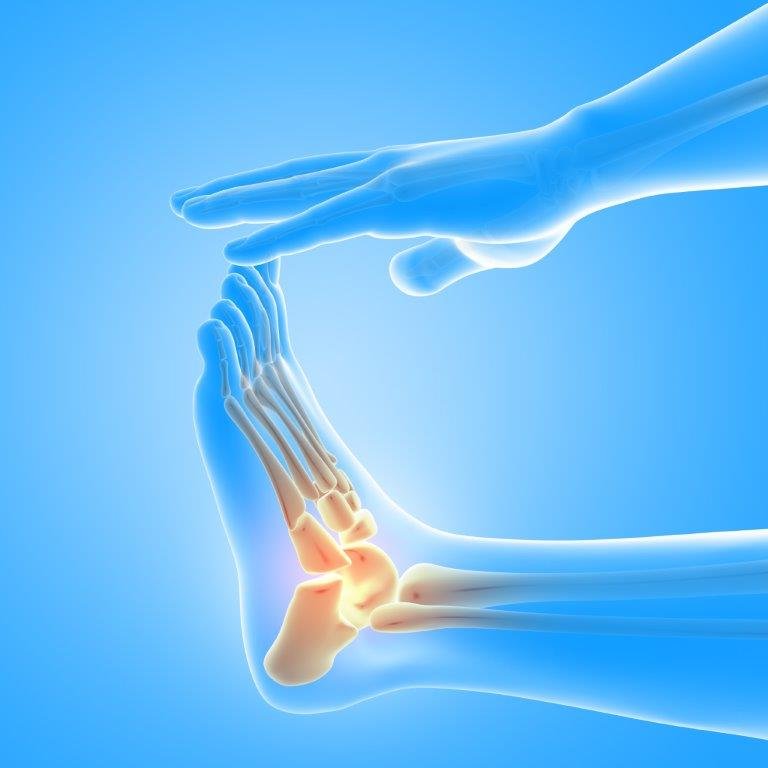Your feet suffer through an incredible amount of wear and tear on any given day, so when you get to the end of the day and feel that twinge in your heel, it’s not just annoying—it can be downright debilitating.
For anyone who’s ever experienced plantar fasciitis (or plantar fasciosis), you know exactly what I’m talking about; if you have experienced this painful condition, it’s basically inflammation of the tissue that runs along the bottom of your foot, connecting your heel bone to your toes.

10 Home Remedy for Plantar Fasciitis cum joint Pain
Foam Roller
The most important piece of equipment that you can use to treat plantar fasciitis is a foam roller. Foam rollers are not only great at releasing muscles, but they’re also fantastic at increasing blood flow and relaxing tense areas in your body.
While research has yet to prove their effectiveness, many athletes swear by using a foam roller before and after strenuous workouts and strenuous days on their feet. For plantar fasciitis relief, you should target all of your major muscle groups including your calves, quads, IT band, hamstrings, hip flexors and back muscles.
Ice Massage
Some research has found that icing massaged with an ice cube can help reduce inflammation. Apply ice to your foot and rub in a circular motion to work out knots of tension, especially if you’ve been on your feet all day at work.
This may relieve pain from plantar fasciitis. If you have access to a large bag of frozen peas or corn, it may be helpful, too; freezing is often more effective than ice packs, which can become warm quickly. After applying an ice pack, get off your feet and rest until you feel better. Ice shouldn’t be applied longer than 20 minutes at a time as it can damage tissue and numb feeling in your foot.
Heat Massage

One of home remedies for plantar fasciitis is heat massage. Heat massage can relax your feet and soften them up by increasing blood flow to them.
- To do heat massage, you need to heat a bottle of water in microwave oven.
- Keep your foot on top of towel so that it absorbs all of moisture from bottom part and then put hot pad on that area which covers area where plantar fascia ligament lies flatly on sole part.
- Applying heat increases blood flow and reduces pain as well as stiffness associated with plantar fasciitis.
Heat Massage also breaks down any calcium deposits or scar tissue formation in sole part. If done regularly, it brings flexibility back into both feet, helping getting rid of pain caused by plantar fasciitis permanently.
Avoid Stairs as Much as Possible
People who have plantar fasciitis often find that they can dramatically reduce their symptoms by avoiding stairs. There are several ways to approach avoiding stairs. First, try to go up and down only one or two steps at a time instead of running up and down flights of stairs.
If you have an elevator in your home or office building, avoid taking it altogether. Elevators put far more strain on your feet than walking up a few flights of stairs does.
Finally, if you’re able to take some time off work, consider using crutches or wheelchair instead of going about your day normally with plantar fasciitis; taking breaks from putting weight on your feet is an important way to help avoid further damage from occurring.
Eat Foods Rich in Magnesium
It’s no secret that magnesium plays a key role in bone and muscle health, but did you know it can also help your feet? If you’re suffering from plantar fasciitis, consuming foods high in magnesium may be able to reduce or eliminate your pain.
Foods rich in magnesium include dark leafy greens (like spinach), halibut, chia seeds, black beans and pumpkin seeds. To get more of these foods into your diet regularly, try adding them to soups and salads. If you have trouble with digestion when eating raw greens like spinach, steam them first before adding them to your meal—it will increase their overall nutritional value.
Manage Stress
When you’re stressed, your body pumps out adrenaline, which causes fluid retention and bloating—not exactly ways to feel better fast. While yoga might not be your thing, research has shown that exercise in general can do wonders when it comes to stress relief.
So pick up a pair of dumbbells or simply take a nice long walk around your neighborhood. Stick with it—you don’t have to be sweating and out of breath; even mild exercise will help relieve some of those physical symptoms of stress.
Just make sure you’re getting at least 30 minutes each day! Exercise isn’t going to cure everything (or maybe anything), but it’s an important part of any home remedy plan. Why?
Take Epsom Salt Baths
Magnesium sulfate, commonly known as Epsom salt, is a popular home remedy used to relieve pain. Because Epsom salt helps to relax muscles, it’s a good way to ease inflammation and reduce discomfort caused by plantar fasciitis.
To take an Epsom salt bath, add one cup of Epsom salt (or 1/2 cup if your tub is smaller) to warm water and soak in it until the water cools down. Because there’s no cure for plantar fasciitis, treatment focuses on relieving symptoms such as stiffness and foot pain; Epsom salt baths are a great place to start. It may also help after exercise or running when plantar fasciitis tends to act up.
Stretch Regularly

Stretching regularly is one of the best things you can do to help prevent plantar fasciitis. The more flexible your calf muscles are, the less strain there will be on your plantar fascia and that means less pain.
Try stretching before bed and when you wake up in addition to other activities like sitting at your desk or taking long walks. If you’re experiencing symptoms of plantar fasciitis, you might also want to check out cold laser therapy.
Use Heel Lifts
Heel lifts, also known as night splints, offer an effective home remedy for plantar fasciitis. Heel lifts stretch your calf muscles while you sleep, which helps strengthen them and lessens your pain when you’re on your feet.
To use heel lifts properly, place one in a shoe that fits well with a slight bend in your knee so it isn’t too tight. Put on socks and go to bed with only one foot in the lift. When you wake up, take off the lift and do some simple stretches before putting on both shoes; doing so will help keep your muscles loose all day long.
Try Shoe Inserts
While there’s no cure for plantar fasciitis, you can ease your symptoms by using shoe inserts. While you might think of orthotics as something only older people use, younger folks can benefit from them as well. Many of those who suffer from plantar fasciitis are active runners and athletes.
If a trip to a podiatrist seems like too much trouble, there are some at-home remedies you can try instead. One home remedy that has proven to be effective is called night splints. There are several varieties of these devices available at medical supply stores, but they all work in basically the same way—by holding your foot into an extended position while it’s healing.

FAQ
Are you suffering from plantar fasciitis?
One of the most common conditions that people suffer from is plantar fasciitis. People who have not heard of it or do not know exactly what it is, here’s what you need to know about plantar fasciitis.
This condition affects all age groups, including children and adults. The main symptom of plantar fasciitis is an unbearable pain in your heel and bottom area when you get up after sleeping or sitting down for long periods of time.
What are the 3 causes of plantar fasciitis?
1. Obesity – Being overweight can contribute to plantar fasciitis because it increases the strain on your foot and puts pressure on your heel and arch.
2. Shoes – Wearing shoes that are too narrow or lack adequate support can also lead to plantar fasciitis. (Think flip-flops, high heels, poorly designed athletic shoes.)
3. Inflexibility – If you aren’t flexible enough, your feet don’t work together properly and cause undue stress on certain parts of your body like your plantar fascia, causing it to become inflamed and painful.
What happens if you leave plantar fasciitis untreated?
The hallmark symptom of plantar fasciitis is inflammation of the thick layer of fibrous tissue that stretches from your heel to your toes. The condition is often caused by flat feet or high arches, which cause excessive and repeated pressure on your plantar fascia.
Over time, your plantar fascia becomes inflamed and less flexible, putting you at risk for damage and pain. If you have chronic heel pain or stiffness after getting out of bed in the morning, it’s time to take action.
Even if you don’t have noticeable symptoms yet, plantar fasciitis can escalate quickly if not treated correctly from its early stages. Here are home remedies for plantar fasciitis that can help alleviate your pain immediately.
What aggravates plantar fasciitis?
While you may not be able to avoid all of these factors, you can certainly ease plantar fasciitis by taking precautions when engaging in activities that put stress on your feet. Activities such as running and dancing are two activities that are likely to aggravate plantar fasciitis.
Additionally, having flat feet also puts you at a higher risk of developing plantar fasciitis. Your doctor can give you inserts or orthotics to wear with your shoes if they believe it will help manage your condition.
Is it OK to go walking with plantar fasciitis?
With plantar fasciitis, you can usually reduce pain by resting and staying off your feet. Using a cane or crutches helps prevent further injury. Some people with heel pain find that applying ice will help reduce inflammation.
Anti-inflammatory medications also can be helpful. Stretching exercises and physical therapy are other good options if you have plantar fasciitis. In some cases, surgery is an option to repair damage in or near your heel bone; however, studies suggest that surgery doesn’t lead to better outcomes than physical therapy and may even increase risks in some people.

Conclusion
At home remedies for plantar fasciitis can help you deal with heel pain without needing to turn to powerful or dangerous medications. To achieve optimum results, use a combination of stretches, over-the-counter anti-inflammatories and arch supports.
These are all safe and natural methods that will allow you to stay comfortable while working towards complete healing. If your symptoms persist after four months, seek professional advice from a podiatrist or orthopedic surgeon who specializes in treating foot injuries. They’ll be able to provide an accurate diagnosis and determine if more invasive treatment is necessary.


